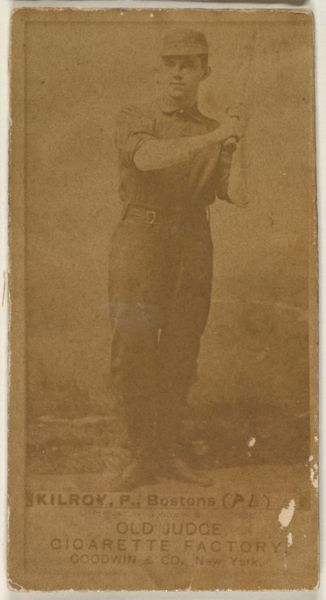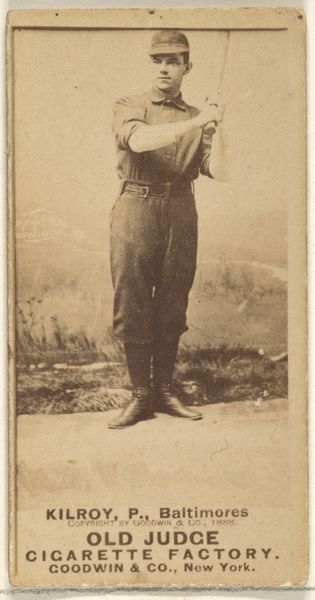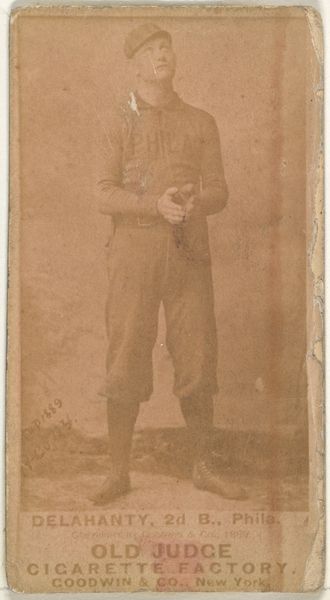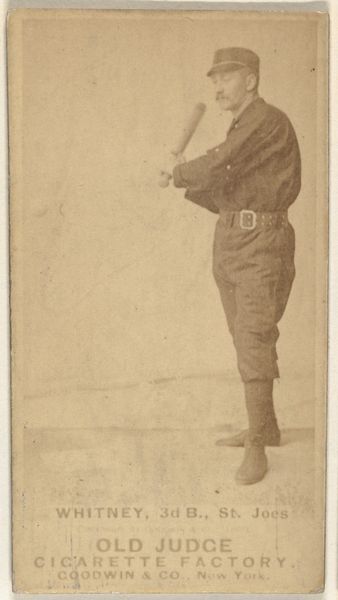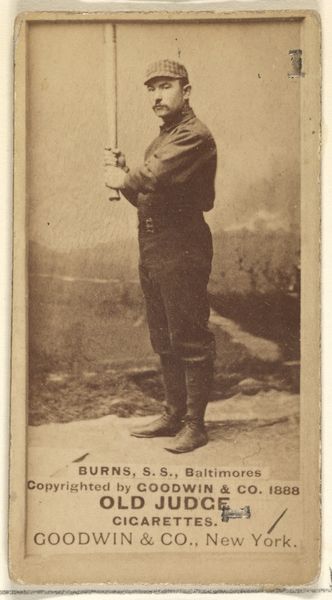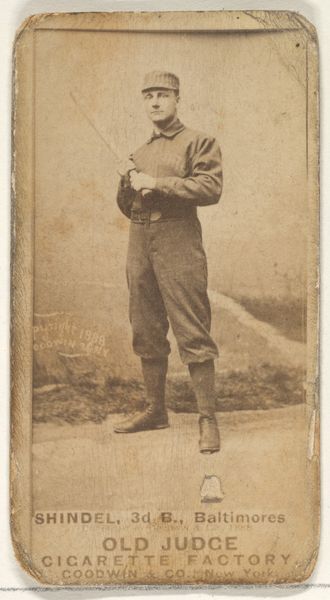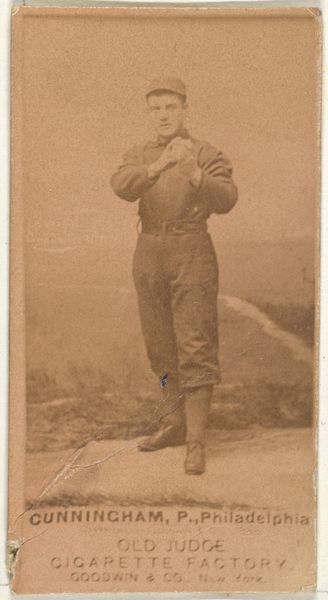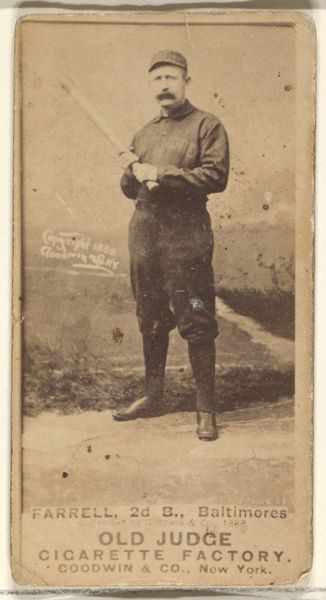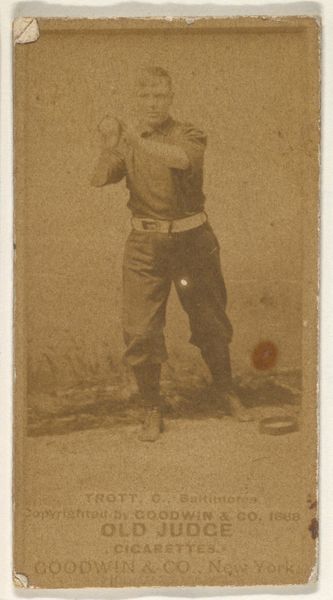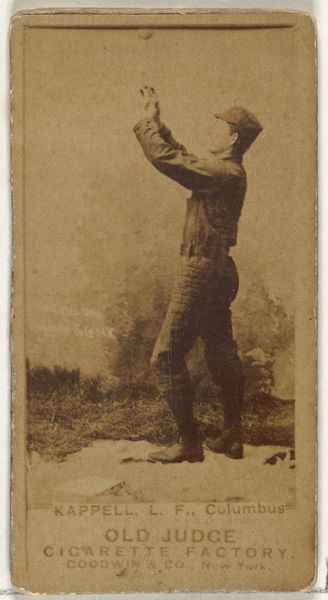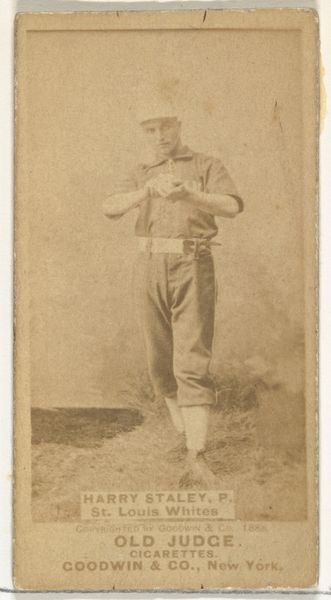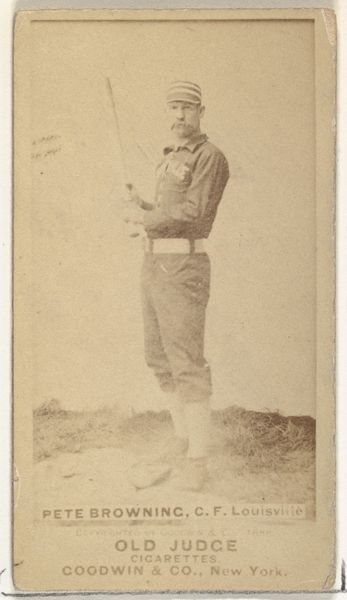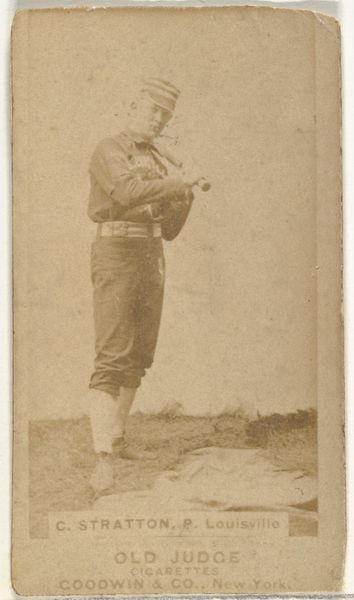
Trott, Catcher, Baltimore Orioles, from the Old Judge series (N172) for Old Judge Cigarettes 1888
0:00
0:00
drawing, print, photography, albumen-print
#
portrait
#
drawing
# print
#
impressionism
#
baseball
#
photography
#
men
#
athlete
#
albumen-print
Dimensions: sheet: 2 11/16 x 1 3/8 in. (6.9 x 3.5 cm)
Copyright: Public Domain
Curator: It’s remarkable how much you can glean about a society through its ephemera. Take, for instance, this albumen print, “Trott, Catcher, Baltimore Orioles,” part of the Old Judge series, produced in 1888 by Goodwin & Company as a promotional item for their cigarettes. Editor: My first impression is how the sepia tone lends such a timeless quality to the image. He looks like he could be swinging for the fences in any era, although I am distracted by how tobacco ads once so casually integrated with everyday life and popular culture. Curator: Precisely. Consider the albumen print process: a meticulous layering of egg white and silver nitrate on paper, resulting in a smooth, almost luminous surface. The player, likely captured in a studio, is then integrated into a staged outdoor scene. It speaks to the burgeoning commercial print industry eager to capitalize on baseball’s rising popularity. The materiality reflects mass culture and industrial development during the late 19th century. Editor: And the photo's circulation cemented the celebrity of the athlete while boosting the cigarette brand's visibility. These cards were incredibly effective marketing. Think about it—collected, traded, and consumed as part of a daily ritual. They normalized smoking and, at the same time, elevated the status of baseball players, turning them into accessible idols. Curator: I agree. The very act of producing and distributing these cards illuminates the intermingling of labor, leisure, and commerce. What resources were used, who printed the images, how were they circulated, and what was their lifespan? Editor: Right, we need to look at how the rise of mass media through print impacted perceptions and the financial implications for players. Did this exposure translate to better contracts, increased stadium attendance, or endorsement deals outside tobacco, or was the focus kept on generating buzz and securing profit for cigarette manufacturers? It reminds us of our present-day digital endorsements! Curator: Exactly, and the layers of capitalism embedded in this small piece are significant. From baseball as spectacle and capitalist consumerism to commercialized portraits to advertising, everything ties together. Editor: This small card holds immense layers that show the intricate relationship between popular culture, business, and shifting societal values. Curator: A fascinating window into American culture during a critical juncture.
Comments
No comments
Be the first to comment and join the conversation on the ultimate creative platform.
